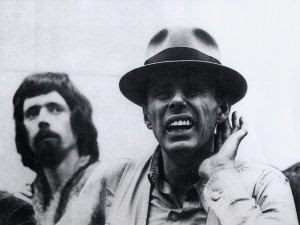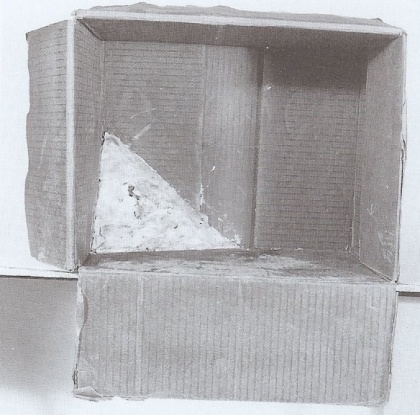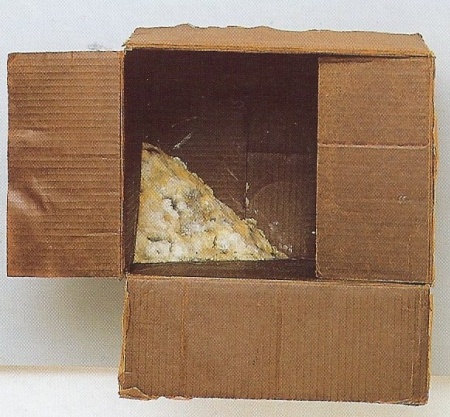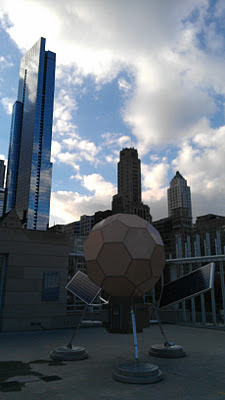This post was inspired by family members and friends who have told me they want a better understanding of Modern and Contemporary Art, but don’t know where to start. The list below is a work in progress and primarily covers the second half of the 19th century in Europe, starting with the Pre-Raphaelites in England and Courbet in France, and concluding with the fin de siècle (a bibliography for the 20th century will be forthcoming). It is not intended to be exhaustive, but rather to provide a list of possible readings that I have personally found interesting and believe others would find useful and enjoyable.
Starred entries are texts that are particularly good for casual readers looking for a solid and enjoyable introduction to a subject.
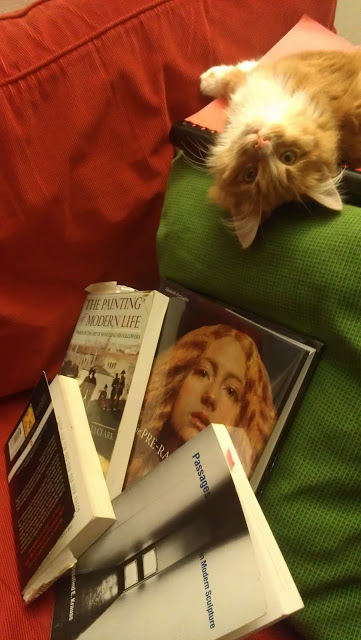
Survey textbooks
I am generally not a fan of broad survey books, but these do a good job of giving contextual information while providing a linking narrative. They also cover most of the major movements and figures I have left out in the other sections.
Chu, Petra ten-Doesschate. Nineteenth-Century European Art. New York: Harry N. Abrams, 2003.
Arnason, H. H. and Elizabeth Mansfield. History of Modern Art (6th edition). Prentice Hall, 2009.
Gamwell, Lynn. Exploring the Invisible: Art, Science, and the Spiritual. Princeton: Princeton University, 2002.
This book begins in the mid-19th century and concludes in the early 20th century. It is a great alternative to a regular survey book for those who are particularly interested in the role of science in Modern art.
Overviews by country and movement
France:
Garb, Tamar. Bodies of Modernity: Figure and Flesh in Fin-de-Siécle France. London: Thames and Hudson, 1998.
Nochlin, Linda. The Body in Pieces: The Fragment as a Metaphor of Modernity. Walter Neurath Lecture. New York: Thames and Hudson, 1995.
Nochlin, Linda. Realism. New York: Penguin, 1971.
England:
Bullen, J. B. The Pre-Raphaelite Body: Fear and Desire in Painting, Poetry, and Criticism. Oxford: Clarendon, 1998.
Prettejohn, Elizabeth. The Art of the Pre-Raphaelites. London: Tate, 2000.
Great for images.
Cowling, Mary. Victorian Figurative Painting: Domestic Life and the Contemporary Social Scene. London: Andreas Papadakis, 2000.
http://www.tate.org.uk/collection/
Tate Britain has the best collection of Pre-Raphaelite and Victorian paintings in the world, including important works by John Everett Millais, Dante Gabriel Rossetti, Elizabeth Siddall, Ford Madox Brown, Edward Burne-Jones, William Holman Hunt, John William Waterhouse, and Richard Dadd. Their collection is available online, and many objects are accompanied by useful texts.
Individual Artists
Bonnard:
Nochlin, Linda. “Bonnard’s Bathers,” Art in America. Vol. 86, No. 7 (July 1998). 63-67, + endpages.
Courbet:
*Rubin, James. Courbet. London: Phaidon, 1997.
This is a clear, well-written and well-organized text about a defining figure of Modernism. Highly recommended for every reader.
Eakins:
Leja, Michael. “Eakins and Icons,” Art Bulletin. Vol. 83, No. 3 (September 2001), 479-497.
One of my favorite articles. A good, brief, and engaging analysis of the work and analytic methods of American painter Thomas Eakins. [Available online via JSTOR.]
Ensor:
Becks-Malorny, Ulrike. Ensor. Köln: Taschen, 1999.
This slim and inexpensive volume is a good introduction to Ensor, his work, and his context. Images are mostly in color and many are large-scale.
Swinbourne, Anna, et al. James Ensor. New York: The Museum of Modern Art, 2009.
Although there is no substitute for seeing Ensor’s highly textured paintings and prints in person, MoMA’s catalogue is about as close as one can get through reproductions. Particularly useful essays include Swinbourne’s “Meeting James Ensor” and Susan Canning’s “James Ensor: Carnival of the Modern.”
Gauguin:
Solomon-Godeau, A. “Going Native,” Art in America (July 1989), 118-29.
This article addresses Gauguin’s self-created myth of primitivism and the social desires which continue to perpetuate this fantasy. Assumes some basic familiarity with Gauguin’s work, but is still broadly accessible.
Manet:
Clark, T. J. The Painting of Modern Life: Paris in the Art of Manet and His Followers. Princeton: Princeton, 1984.
Monet:
Levine, Steven. “Monet, Lumiere and Cinematic Time,” The Journal of Aesthetics and Art Criticism 36 (Summer 1978), 441-447.
Morisot:
*Higonnet, Anne. Berthe Morisot. New York: Harper and Row, 1990.
This is an enjoyable read that centers on the life of an important Impressionist who is usually only dealt with in a very cursory way. It provides a personal glimpse into the world of the Impressionists and the Parisian art scene in and around the 1870s. Recommended for every reader.
Nochlin, Linda. “Morisot’s Wet Nurse: The Construction of Work and Leisure in Impressionist Painting,” in Women, Art, Power and Other Essays. New York: Harper and Row, 1988.
Pissaro:
Stevens, Mary Anne. “The Urban Impressionist: Pissaro’s Cityscapes, Series and Serialism,” Apollo 11 (1992), 278-283.
Rodin:
Butler, Ruth E., ed. Rodin in Perspective. Englewood Cliffs, NJ: Prentice Hall, 1980.
The text, especially the introduction, is very useful in introducing Rodin and his reception. The images, however, are few and are better for context than for appreciating his sculpture.
Sargent:
Simpson, Marc. Uncanny Spectacle: The Public Career of the Young John Singer Sargent. New Haven: Yale, 1997.
Seurat:
Broude, N. Seurat in Perspective. Englewood Cliffs: Prentice Hall, 1978.
See especially the introduction. This text is very good for explaining Seurat’s work and context, but the images are small and in black and white.
Crary, J. “Seurat’s Modernity,” in Seurat at Gravelines: The Last Landscapes. Indianapolis: Indiana UP, 1990.
Nochlin, Linda. “Seurat’s Grande Jatte: An Anti-Utopian Allegory,” in The Politics of Vision. New York: Harper and Row, 1989.
Signac:
Paul Signac, 1863-1935. New York: Metropolitan Museum of Art, 2001.
Vuillard:
Sidlauskas, S. “Contesting Femininity: Vuillard’s Family Pictures,” Art Bulletin 79, 1 (March 1997), 85-111.
Essay collections
Clark, TJ. Farewell to an Idea. New Haven: Yale, 1999.
See especially “Freud’s Cezanne,”even though it deals with the last paintings of Cezanne’s career which he made in the first years of the 20th century.This is a dense but rewarding group of essays. A must for serious students, but casual readers may find it too demanding for their needs.
Krauss, Rosalind E. Passages in Modern Sculpture. Cambridge, MA: MIT, 1977.
Another classic and influential collection. Most of the essays deal with the 20th century, but there is a good piece on Rodin at the beginning.
Contextual primary sources: contemporary novels, criticism, and influential texts
Baudelaire, Charles. “On the Heroism of Modern Life” (1846) and “The Painter of Modern Life” (1863) in Frascina, Francis and Charles Harrison, eds. Modern art and Modernism: A Critical Anthology. New York: Harper and Row, 1982.
Benjamin, Walter. “Paris, Capital of the 19th Century” and “On the Mimetic Faculty,” in Reflections: Essays, Aphorisms, Autobiographical Writings. New York: Schocken, 2007. 146-153, 333-336.
Gauguin, Paul. Noa Noa: The Tahitian Journal.
Gauguin’s semi-fictional account of his first trip to Tahiti.
Huysmans, Joris-Karl. Against Nature (A Rebours). London: Penguin, 2003.
Originally written in 1903, this essentially plotless novel captures the essence of fin de siècle “decadence.” In art, the Decadents included Gustave Moreau and Odilon Redon, and Huysmans dedicates Chapter 5 of the book to a description of their work.
Zola, Emile. “Edouard Manet,” in Modern Art and Modernism: A Critical Anthology. New York: Harper and Row, 1982. 29-38.
Non-Western Modernism in the 19th-century: examples from Japan and Native America
There are a number of problems in attempting to create a “global” bibliography of Modernism. Modernism, after all, meant different things in different cultures, and the changes that took place came about in different ways, for different reasons, at different times, with different implications. Not having a background in the history of each—or having a much stronger background in one—tends to mean the privileging of one culture over the others and inevitably skews our understanding of Modernism as a global phenomenon. The difference in timelines (and academic traditions) also brings up very practical problems of where to start and cut-off bibliographies. All of that being said, I tend to think the results are worse when we treat Modernism only from the perspective of Europe and the European-derived cultures of the Americas.
My own background is in Western/non-Western trans-cultural art, meaning that the circumstances with which I am most familiar are either Europeans or Euro-Americans utilizing or attempting to understand traditions from other parts of the world (mostly Japan, Native America, and Africa), or artists from Japan, Native America, and Africa dealing with, confronting, and using traditions from Western cultures. Therefore, the absence of a country or culture from this list should be understood as a result of the limits of my own background.
Native American/First Nations
Berlo, Janet and Ruth Phillips. Native North American Art. Oxford: Oxford University, 1998.
This is a chronologically, geographically, and culturally broad survey book about Native American art, covering the material culture of Native peoples before and after colonization, through the 20th century. There is a lot of information packed into each section, particularly if you are not already familiar with Native names and terminology.
Brown, Steven. Native Visions: Evolution in Northwest Coast Art from the Eighteenth through the Twentieth Century. Seattle: Seattle Art Museum, 1998.
Along with clear essays and images, this catalogue includes a map outlining the territories of individual NWC culture groups, in some cases providing both their current and outdated (but still common) names.
Holm, Bill. Northwest Coast Indian Art: An Analysis of Form. Seattle: University of Washington, 1965.
Holm was the first person to systematically analyze and explain in writing the vocabulary and grammar of Northwest Coast design. His Analysis of Form is still the primary guide to understanding the elements of NWC style. I include it here because the objects he studied are mostly from the 19th century.
Seattle Art Museum. The Spirit Within: Northwest Coast Art from the John H. Hauberg Collection. Seattle: Seattle Art Museum, 1995.
This is a catalogue of objects from the 19th and 20th centuries. In addition to excellent images with individual descriptions, the longer essays provide important historical, cultural, and formal (stylistic) information. Robin Wright’s text on Haida argillite carvings is particularly illuminating in the context of the 19th century.
Japan
The birth of Modernism in Japan is somewhat contested. One popular date is 1868, the start of the Meiji period. Another is 1854, when Japan was forced to sign a trade agreement with the United States, thereby marking the end of Japanese seclusion. In addition to making it possible for Japanese prints and goods to travel to Europe where they had a significant impact on artistic styles, the treaty also opened Japan to Western influence, including European-style Industrialization (a process that in Japan was particularly rapid and brutal). Other historians place the beginnings of Modernism even further back in the Edo period (1603-1868), due to the rise of a merchant class and the period’s thriving economy, increased urbanism, and artistic development.
Addiss, Stephen. Japanese Ghosts and Demons. New York: George Braziller, 1985.
Produced in conjunction with the Spencer Museum of Art, University of Kansas, this is a great book for those interested in mythology and folklore. It covers a broad timeframe, but the largest group of objects are from the 19th century.
Bouquillard and Christophe Marquet. Hokusai: First Manga Master. Liz Nash, ed. New York: Abrams, 2007.
Hokusai is best known for prints, particularly his One Hundred Views of Mount Fuji (1835) series. In contrast, this book focuses on his manga (drawings). The pictures are arranged by theme (such as “Plates of Animals” or “Variations in Climate and Vegetation”).
Clark, Timothy. Kuniyoshi from the Arthur R. Miller Collection. London: Royal Academy of Arts, 2009.
This large volume is the catalogue from an impressive exhibition of prints by one of the Edo period’s great print artists, Utagawa Kuniyoshi (1797-1861). Like the exhibition, the catalogue is arranged by themes (Warriors, Beautiful Women, Landscapes, Theater, and Humor), and each image is well reproduced. However, the text can be a bit dry.
Clark, Timothy. Demon of Painting: The Art of Kawanabe Kyōsai. London: British Museum, 1993.
Another monographic exhibition catalogue, this time for the painter and woodblock artist, Kawanabe Kyōsai (1831-89).
Conant, Ellen. Nihonga: Transcending the Past. St. Louis: Saint Louis Art Museum, 1995.
Nihonga (Japanese-style painting) was a post-isolation movement and style that self-consciously rejected overtly Western traditions in favor of “traditional” Japanese materials and techniques. This exhibition catalogue covers works produced in the 19th and early 20th centuries.
Earle, Joe. Netsuke: Fantasy and Reality in Japanese Miniature Sculpture. Boston: MFA, 2001.
Netsuke are a fairly marginalized subject in academic studies of Japanese art, and are primarily within the purview of collectors. This publication is a rare scholarly introduction to the topic, dealing mostly with objects from the Edo and Meiji periods.
Figal, Gerald. Civilization and Monsters: Spirits of Modernity in Meiji Japan. Durham: Duke, 1999.
As a book about folklore in modern Japan, Civilization and Monsters provides a useful link between the content of much of the work in the catalogues featured in this section and the concept of modernity as it applies to Japan in the 19th century.
